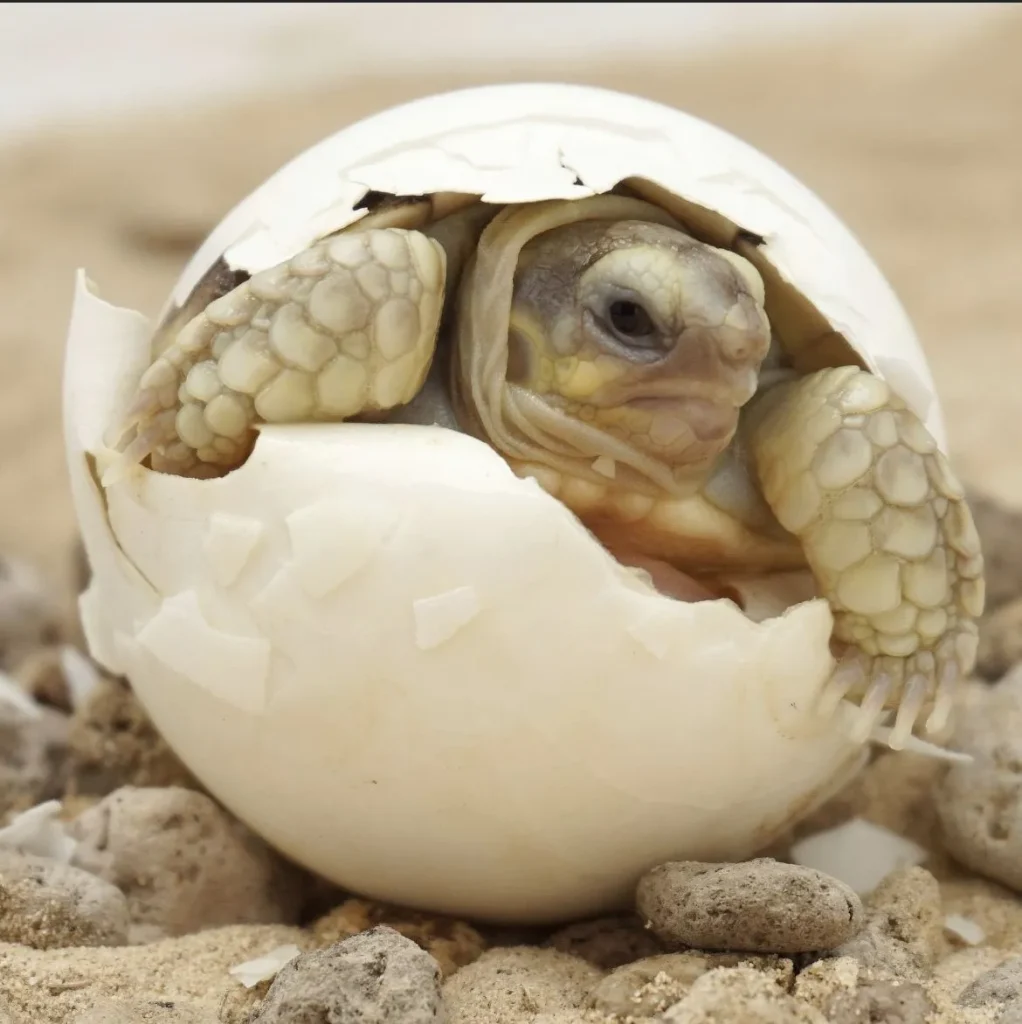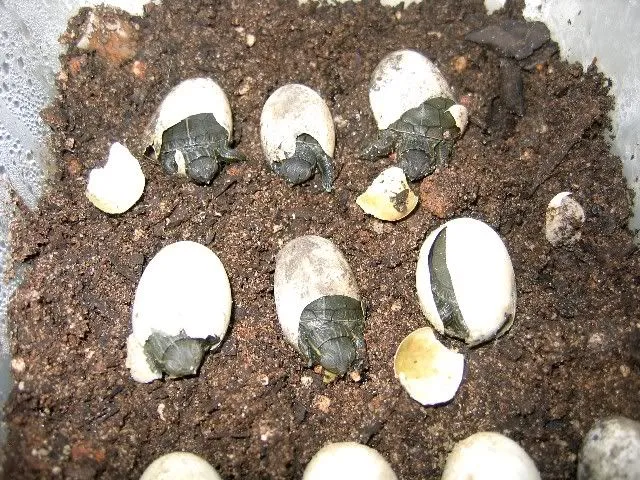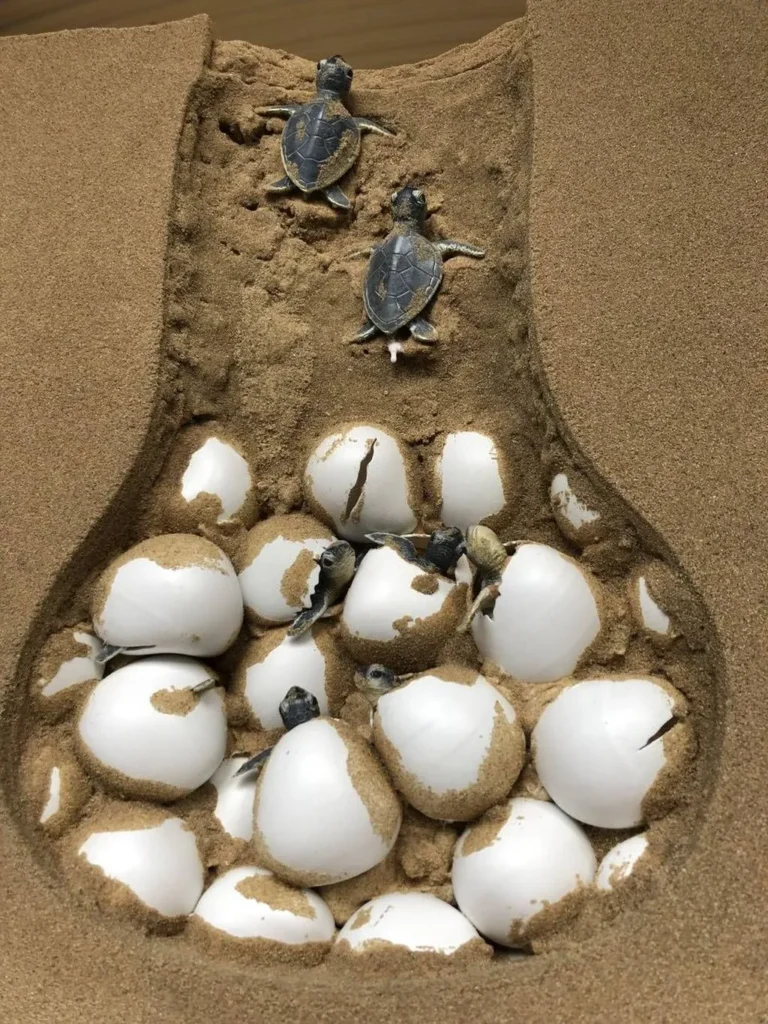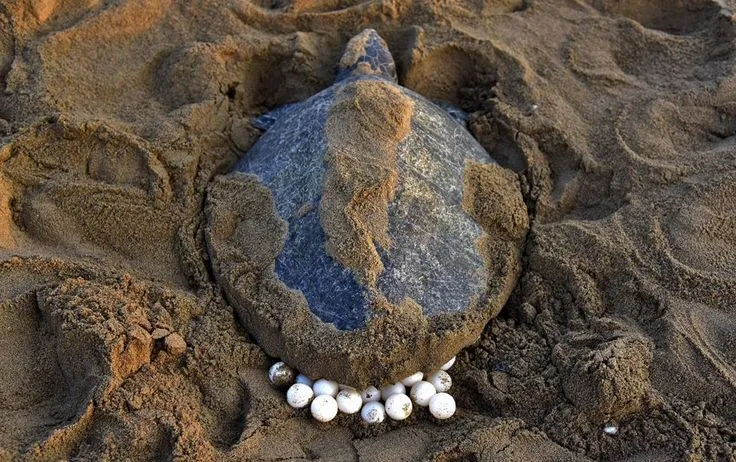Introduction on what does a turtle egg look like
When I first examined on what does a turtle egg look like, I was surprised by how white and almost perfectly round they looked, nothing like what I had imagined. Some reminded me of ping pong balls, yet their size and shape often varied between species. Unlike the brittle shells of birds, their surface felt soft and slightly leathery shell, making them appear more delicate than one would expect. During fieldwork, I noticed a few slightly elongated eggs, which emphasized how subtle changes in form can matter for development. Their nature is fragile, and I quickly learned that if they are rotated or accidentally disturbed, the chances of survival can decrease dramatically.
Reflecting on this, I realized how essential careful observation is. Even among multiple species, the eggs display consistent themes of resilience hidden within vulnerability. Holding one for research taught me caution, and I often reminded colleagues never to mishandle them, because once fragile structures are moved, the embryo may not adjust. That sense of responsibility left a lasting impression on me as a researcher, where studying turtle life cycles always began with respect for the humble eggs and their unique biology.

Nesting and Egg Laying
While observing a female turtle during breeding season, I noticed how instinct drove her to create nests in both sand and soil depending on the location. With her hind flippers, she worked tirelessly, digging with precision. Among sea turtles, this activity often happened at night, giving them safety from predators. By contrast, I have seen freshwater turtles during the day, carefully selecting ground that would support the eggs. The act itself highlighted how strongly species behavior connects with environment.
The number of eggs in a clutch can vary, sometimes just a few, other times over 100, depending on the species. Each nesting period felt unique, showing how one season could differ drastically from another. I often noted how multiple nests were scattered along the coast, reminding me that natural cycles are both complex and deeply structured. Handling these observations firsthand reinforced how important the relationship is between the turtle’s choice of site and the survival of her eggs.
Incubation and Development
In my research, I found that the incubation time was rarely predictable across every species. Some clutches took close to 45 or even 75 days, depending on surrounding temperature and soil stability. The delicate balance of conditions makes every hatchling journey unique. What fascinated me most was how sex determination worked, where warmer environments produced more females, while cooler ranges often led to males.
Maintaining stable and humid conditions is essential, otherwise drying damages the eggs before development completes. When monitoring, I focused on conservation practices, ensuring that proper conservation techniques limited environmental disruption. Seeing a hatch emerge successfully showed how fragile yet adaptive the process could be when supported by patience and protection.

Caring for Turtle Eggs (Dos and Don’ts)
During my field experience, I learned that how you handle an egg can determine its fate. Conservationists often remind us that even a slight rotate can interfere with natural growth, so careful restraint is vital. I saw local communities protecting nests from predators and human intrusion, a reminder that minimizing disturbance is just as important as scientific monitoring.
Another overlooked detail is the role of sunlight and heat. If conditions force relocation, then creating the correct depth and orientation becomes crucial. I practiced this process once under expert guidance, and it showed me how delicate these steps are when dealing with eggs in vulnerable environments. Knowing when to intervene and when to leave nature alone is the real skill in effective care.
Predation and Threats (from Pasopacifico and TurtlesKingston)
When studying field sites, the most constant challenge for turtle conservation is the vulnerability of eggs. Natural threats like raccoons, birds, and crabs often dominate the beaches during nesting periods. I have witnessed how quickly a single predator can destroy an entire clutch, proving how fragile this stage truly is.
Beyond wildlife, human activity adds another layer of interference. From curious visitors to poachers, every disruption has consequences. Effective protection requires protecting nesting sites through monitoring and barrier placement. Conservation teams emphasize conservation practices not just as theory, but as the only way to secure turtle populations against these multiple dangers.

Eggshell Composition (from Britannica)
When I first examined turtle reproduction closely, the difference between turtles and bird eggs stood out. Turtle eggs are flexible and leathery, unlike the typical hard-shelled ones we see in chickens or sparrows. This adaptation gives the eggs a resilience suited for sandy nesting environments.
During surveys near coastal areas, I observed how eggs could absorb water from surrounding soil. In sandy habitats, this exchange plays a key role in development, helping embryos survive until hatching. The role of nests in maintaining balance between moisture and protection illustrates why this composition is not just a feature but a survival mechanism.
FAQs
What do turtle eggs look like?
Turtle eggs are usually white and almost perfectly round, often compared to ping pong balls. Depending on the species, the size and shape may change slightly, and some appear a bit elongated. Unlike bird eggs, the shell feels soft with a thin leathery shell, which makes them fragile. If the egg is rotated or disturbed, the embryo can be harmed.
How big are turtle eggs in size and shape?
Most turtle eggs match the size of small ping pong balls. They are round or sometimes elongated in shape, but remain fragile and easily damaged.
Are turtle eggs soft or leathery?
Unlike brittle bird eggs, turtle eggs are soft and covered with a thin leathery shell. This flexibility helps them adapt to sandy nests but also makes them more vulnerable if disturbed.
Do turtle egg shells look like chicken eggs?
No, turtle eggs differ from chicken eggs. While chicken eggs are hard and brittle, turtle shells are soft and leathery, making them less likely to crack but more sensitive to handling.
When do female turtles lay eggs?
A female turtle creates nests in sand or soil using her hind flippers. Sea turtles usually nest at night for safety, while freshwater turtles may nest during the day. Nesting occurs in specific times of the season.
How many eggs can a turtle lay in one clutch?
Depending on the species, a turtle may lay a single clutch of a few eggs or sometimes over 100 during a nesting season.
Do sea turtles and freshwater turtles nest differently?
Yes. Sea turtles usually crawl onto beaches at night to dig in sand, while freshwater turtles often build nests in soil during the day.
What role do hind flippers play during nesting?
The hind flippers of a female turtle act like natural shovels. They dig the sand or soil carefully to form the nests that hold the eggs.
How long is the incubation period for turtle eggs?
The incubation time varies by species. Eggs may hatch after about 45 to 75 days depending on conditions.
How does temperature affect turtle hatchlings?
Temperature strongly influences hatchling sex. Warmer nests often produce more females, while cooler ones result in more males.
Why are stable and humid conditions important for turtle eggs?
Eggs need stable, humid conditions to survive. If the nest becomes too dry, drying may kill the eggs, which is why conservation efforts monitor moisture closely.
Do all turtle species have the same incubation period?
No, the incubation time is not identical. Different species may take 45 or up to 75 days for the eggs to hatch.
How should you handle turtle eggs safely?
You should avoid direct handling of turtle eggs. If necessary, do not rotate them, as this can damage embryos. Protect nests from predators and human disturbance. Keep the orientation of the egg the same if moved.
Why is relocation of turtle eggs risky?
Egg relocation requires replicating the original depth and orientation of the nest. Improper movement or exposure to sunlight and heat may cause embryo death.
What can damage turtle eggs during care?
Excessive rotation, direct sunlight, heat, or human disturbance are major risks. Predators also target nests regularly.
What are the main threats to turtle eggs?
Turtle eggs face threats from raccoons, birds, and crabs. Human interference such as poaching also increases risk.
How can nesting sites be protected?
Protecting nesting sites through fencing, patrols, and education helps conservation. These steps reduce human interference and support long-term conservation.
Do raccoons and birds eat turtle eggs?
Yes, raccoons, birds, and crabs are common predators that consume turtle eggs in vulnerable nests.
Why are turtle eggs leathery instead of hard-shelled?
Unlike birds, turtles evolved flexible, leathery eggs rather than hard-shelled ones. This adaptation works better in sandy environments.
Can turtle eggs absorb water from nests?
Yes, turtle eggs can absorb water through their leathery shells. This is vital when placed in sandy nests.
How do sandy nests affect turtle egg development?
A sandy nest allows eggs to absorb water, keeping them moist. The nests act as natural incubators.
Can you touch turtle eggs without harming them?
Touching turtle eggs should only be done in emergencies. Without proper care, even slight movement can damage the embryo.
Do turtle eggs get damaged if rotated?
Yes, if you rotate turtle eggs, the movement can separate membranes and harm the embryo.
Are turtle eggs hard or soft?
Turtle eggs are soft and leathery, unlike chicken eggs that are hard and brittle.
Do all turtles lay eggs on land?
Yes, all turtles lay their eggs on land. No species deposit eggs in water.

Pingback: Do Turtles Have Scales? 7 Facts, Types, and Survival Secrets